- S.D. Eibar ready for maiden La Liga outing
- SD Eibar stengthen ahead of debut La Liga season
- Can ‘Super Mario’ live up to expectations in Madrid?
- MAN IN THE GROUND – Brentford 0 – 4 Osasuna
- Historic Basque derby welcomes S.D. Eibar to La Liga
- Munich to Madrid, via Brazil – Tony Kroos
- Rakitic in Spanish Switch
- Can Spain find redemption in Rio?
- Viva Espana! A season of redemption for Spanish football
- From the old to the new: who can fill the void in years to come for La Roja?
Island Life – The Story of UD Las Palmas
- Updated: 8 September, 2012
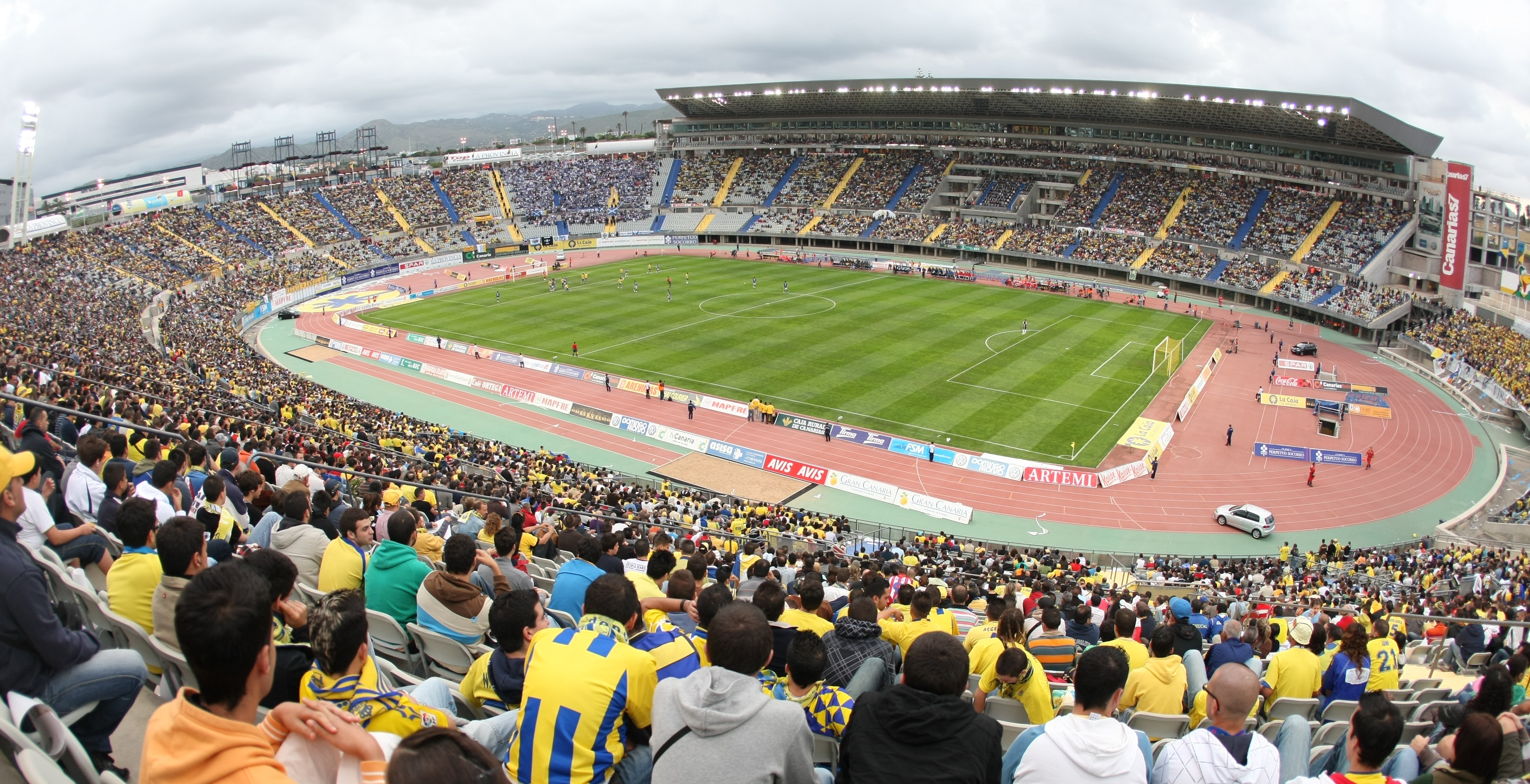
Organised football has been played in the Canarias since the early part of the twentieth century, but with no access to Spanish national competitions, matches were confined to island leagues and an overall Canarias regional championship.
In February 1949, five leading clubs from Las Palmas met with the purpose of forming a united club that would be able to compete at a national level. Negotiations between the five, CD Gran Canaria, Atletico Club, Arenas Club, Marino FC and Real Club Victoria, were protracted, but the motion gained added momentum when the Spanish Federation agreed to the inclusion in the national leagues of a Canarias Championship on 6 June 1949. Finally on 22 August 1949, Unión Deportiva Las Palmas was founded.
The club had a ready-made stadium as the Estadio de Gran Canaria (later to renamed Estadio Insular) had opened on 25 December 1944 with a match between a select Las Palmas XI and a Select Port XI. On opening, it had a capacity of 8,000, but when it was purchased by the local municipality in 1950, it was extended to hold 25,000. UD Las Palmas played their first match at the stadium on 9 October 1949, with Marino FC in their last match as a professional outfit, as the opposition.
The progress of the new club was rapid, taking up the position in the Tercera earned by Real Club Victoria, it immediately earned promotion to La Segunda. A fourth place in the second division saw the club enter the play-offs at the end of the 1950-51 season, where they duly finished top of the mini league and won promotion to La Primera.
It was apparent however, that progress had been too swift, for their stay in the top tier lasted a season and UD Las Palmas was relegated having conceded 95 goals, losing all but one of their away matches. They returned to the top flight for the 1954-55 season and this time their stay lasted six seasons.
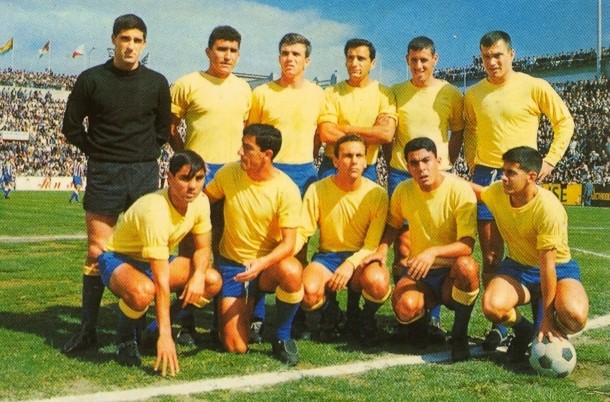 The club’s Golden Era began with promotion back to La Primera in June 1963. Steady progress was made until they earned a runners-up position behind Real Madrid in the 1968-69 season. UD Las Palmas qualified for the Fairs/Uefa Cup on three occasions and in 1978 lost to Barcelona in the final of the Copa del Rey at the Santiago Bernabéu.This was by far the longest sustained period of success with their stay in La Primera lasting 19 years.
The club’s Golden Era began with promotion back to La Primera in June 1963. Steady progress was made until they earned a runners-up position behind Real Madrid in the 1968-69 season. UD Las Palmas qualified for the Fairs/Uefa Cup on three occasions and in 1978 lost to Barcelona in the final of the Copa del Rey at the Santiago Bernabéu.This was by far the longest sustained period of success with their stay in La Primera lasting 19 years.
Las Palmas returned to the top tier for a three season stint in the mid-eighties, by the start of the nineties, they were at the wrong end of La Segunda. A drop to Segunda B followed in June 1992 and with it severe financial difficulties. What was expected to be a quick visit to the third level turned into a four season long struggle.
During this period, it has to be said that Insular was quite a spruce and atmospheric ground, with its 22,000 yellow and blue seats all in close proximity to the pitch. The only cover was on the north side of the stadium and the largest bank of seating was arranged in three tiers behind the west goal.
By the end of the nineties however, it was clear that Insular was on borrowed time as it featured few of the facilities associated with a modern stadium, so in 2000 the municipality decided to start building a new stadium in the southern suburb of Siete Palmas.
Insular was to get one last hurrah however, after UD Las Palmas returned to La Primera in 2000. Unfortunately the stay lasted just two seasons and the club was back in La Segunda when it played Elche on 29 June 2003 in their last ever match at the Estadio Insular.
The new €50m development did not get the approval from the club’s supporters. Designed by Pedro Medina, the municipality’s brief of a multi-sports and leisure development was followed to the nth degree and what was delivered was about as far away from the old Insular as one could possibly get.
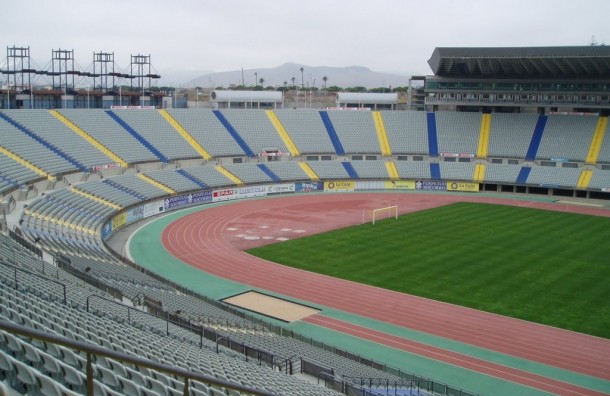 Almost universally disliked by any follower of the club, it opened in 8 May 2003 with a friendly match against Anderlect. There was another problem however that had nothing to do with the stadium’s design. Las Palmas was no longer in the top flight and there was no hope of filling the 31,000 seats at the new arena. Worse was to follow, as in their first full season at new stadium, the club was relegated to Segunda B.
Almost universally disliked by any follower of the club, it opened in 8 May 2003 with a friendly match against Anderlect. There was another problem however that had nothing to do with the stadium’s design. Las Palmas was no longer in the top flight and there was no hope of filling the 31,000 seats at the new arena. Worse was to follow, as in their first full season at new stadium, the club was relegated to Segunda B.
With debts of over 60 million euros, Las Palmas was saved in part by new bankruptcy laws and new club president Miguel Angel Ramirez. It took two seasons to escape Segunda B and in the final of the 2005-06 play-off, a record attendance of 30,210 watched Las Palmas beat CD Linares 1-0 to clinch promotion.
The Estadio Gran Canaria is big and grey and unloved. So much so, that the club is seriously considering a move back to a redeveloped Insular. This has prompted the local municipality to spring into action with a 25 million euro plan to remove the athletics track, lower the pitch and increase the capacity to 40,000.
In the meantime, Las Palmas play in front of average crowds of 12,000, who are lost in this cavernous bowl. Unlike other large stadiums with tracks, the whole of the stadium is open on match days with the club’s most passionate supporters opting for the smaller north terrace.
The rest of the stadium is made up of a large single tier of grey seats that sweep around from east to west. The west side has three levels of hospitality boxes at the rear of the seating and a deep cantilevered roof, the stadiums only redeeming feature, provides almost total cover for the seats below.
I hope that UD Las Palmas future lies back in the more intimate confines of the Estadio Insular and that the leading lights of La Liga can start island hopping again.
________________________________
For more on the football stadiums of Spain, visit Estadios de Futbol en Espana
Follow @icentrocampista

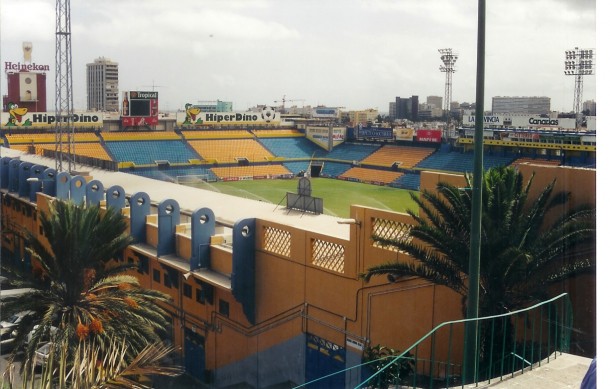
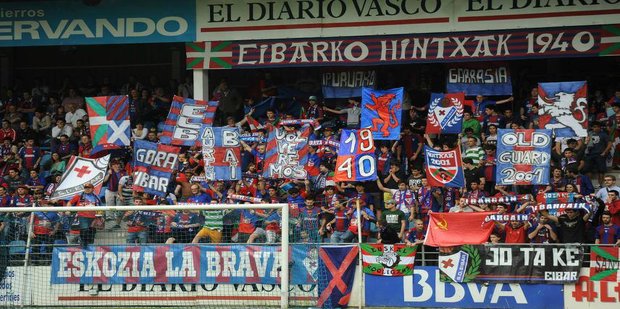




One Comment
You must be logged in to post a comment Login